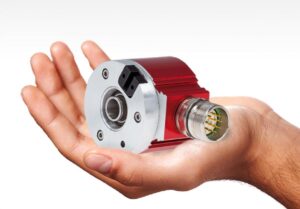Currently Empty: $0.00
Identify the precise motion or position with the Incremental Rotary Encoders

The incremental encoder is a typical device that is utilized in heavy-duty, light, or service station-based industrial applications for precisely identifying the motion or position. Such an encoder tool aids in altering the intersecting motion or position of the shaft into a digital or analog code, thereby recognizing the relative location. Since there are only some encoder sensors involved, the mechanism of an incremental encoder is simple, and feasible, while offering enhanced speed and distance assessment.

Such encoders are electro-mechanical devices that aid in converting the rotary displacement into a pulse or digital signal. Such encoders create a pulse for each incremental rotational step. With constant and increased industrial demand in the market, distinct type of incremental encoders is mostly applied in integration with mechanical conversion devices, therein quantifying straight or undeviating motion. Therefore, it is quite sensible to order such Incremental Rotary Encoders for accurately identifying displacement and speed in different industrial applications.
What Is Meant By Incremental Encoders?
Incremental Encoders are typical optical encoders that are idealistic for quantifying velocity, and endless amassed measures. The device comes with around 25% energy savings, along with increased brightness when compared to similar products. Such encoders are represented by their smaller and compact size, lightweight, easier-to-install, simpler maintenance, along with non-contact and zero friction or wear and tear. Besides, such devices bring in optimal precision with smaller torque drives, alongside faster response areas providing larger measurements, and digital output features.
How Does An Incremental Encoder Work?
These incremental encoders comprise a rotating disc, a light sensor or photodetector, and a light source. The disc is affixed onto the rotating shaft with transparent and opaque patterns which creates a digital pulse, whenever the patterns interfere with the light onto the photodetector. In this context, the specific quantity of digital pulses has a phasing between two signals that are known as quadrature. The typical assembly in incremental encoders consists of PCB, cover, and a spindle assembly.
Here, the PCB comprises a sensor array that generates only two primary signals for the function of identifying the speed and position. Such optical encoder sensors detect the light as it passes through the marked rotating disc, which moves as the spindle assembly gyrates with the information translated into digital pulses by the PCB. In the case of an incremental magnetic encoder, the sensor is substituted with the magnetic sensor, wherein the gyrating disc consists of a sequence of magnetic poles.
What Are The Distinct Usages Of The Incremental Encoders?
The incremental encoder sensors are modeled to be customizable and flexible to adapt to a diverse variety of applications, which can be classified into three wider categories of usages, depending on the specific industrial environment.

Heavy-Duty Usages: Such incremental encoders are extensively used in highly demanding zones, where the risk of moisture and contaminants comes with a higher possibility. Such an environment can be seen in the paper and pulp industry, along with wood mills, and steel manufacturers, where the shock, temperature, and the vibration is considerably higher.
Industrial Applications: These incremental encoders can also be utilized in general manufactory settings, in which case it requires standard IP ratings, along with shock, vibration, and temperature specifications. Such conditions are mostly seen in the textile, factory-based automation plants, and food and beverage industries.
Light Duty or Service Station: Again, such incremental encoders are also applied in a controlled environment process that needs higher temperature and precision, like the electronics, robotics, and semiconductor processing plants.
Final Verdict
Vindicating the distinct privileges bestowed by the Incremental Rotary Encoders supplied by Gordy’s Sensors, it is quite rational to select such a high-end non-contact device with zero abrasions, and almost 25% power savings to obtain optimal industrial effectiveness with less operating time.
